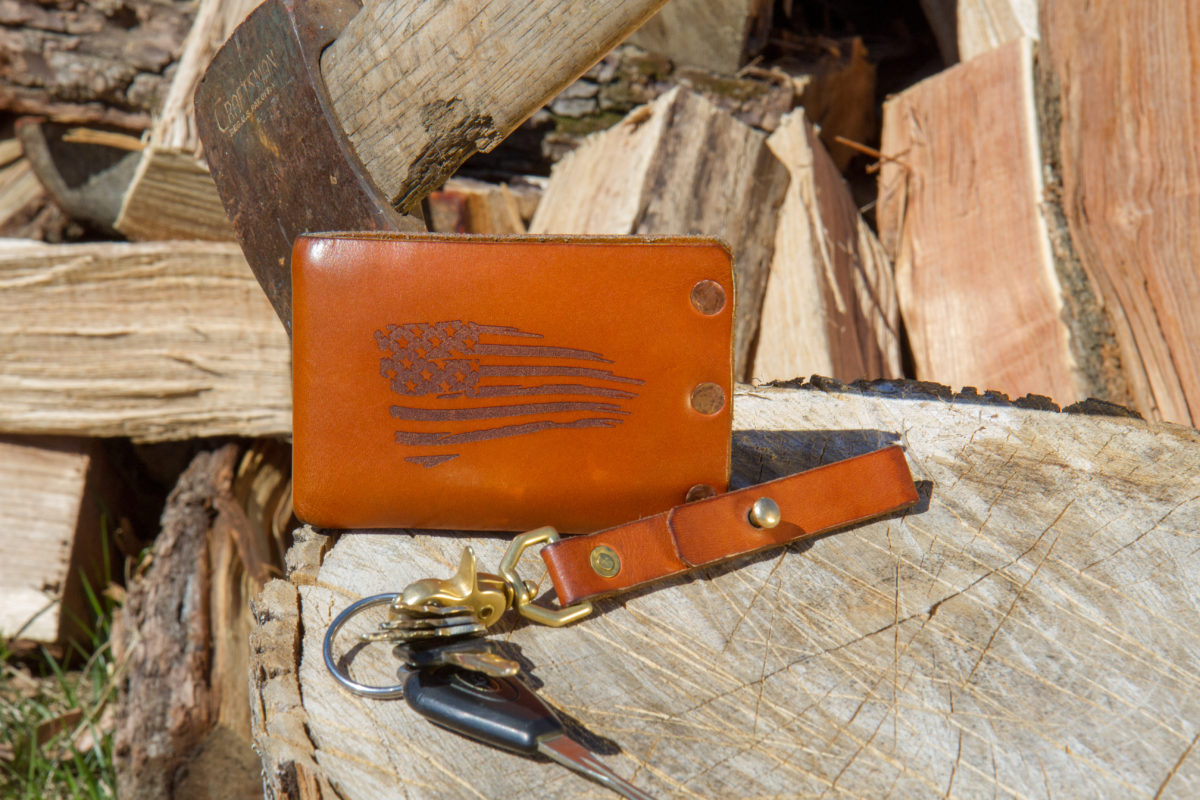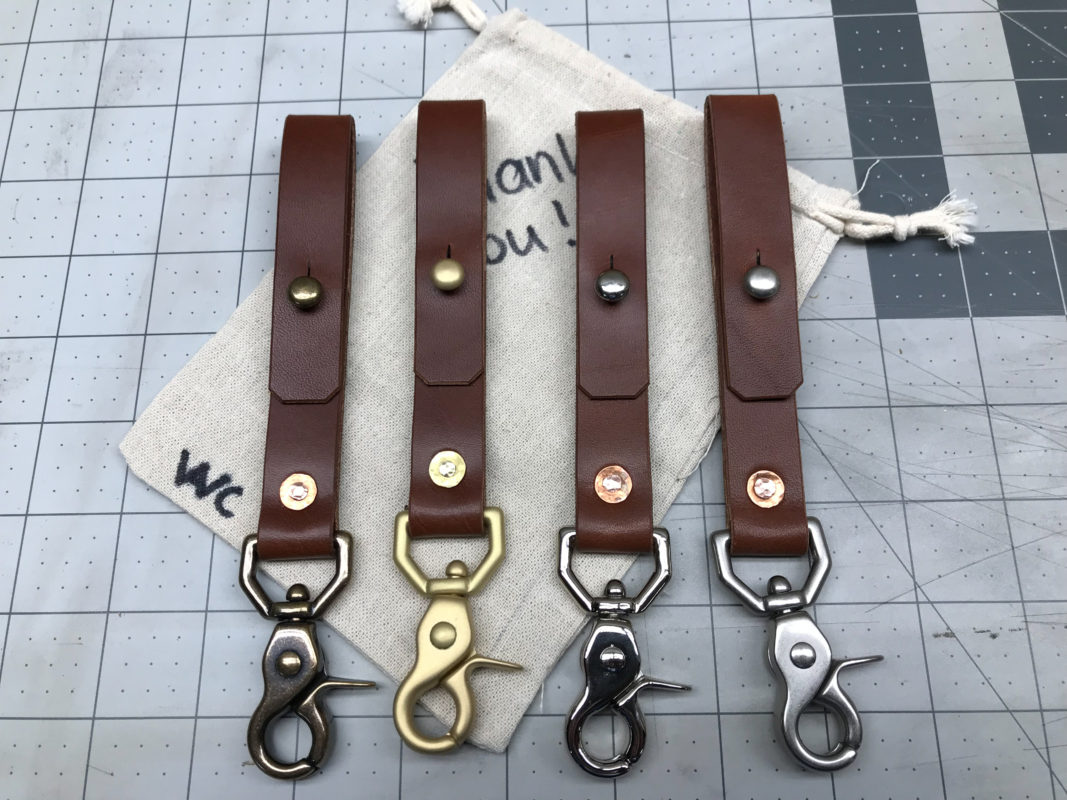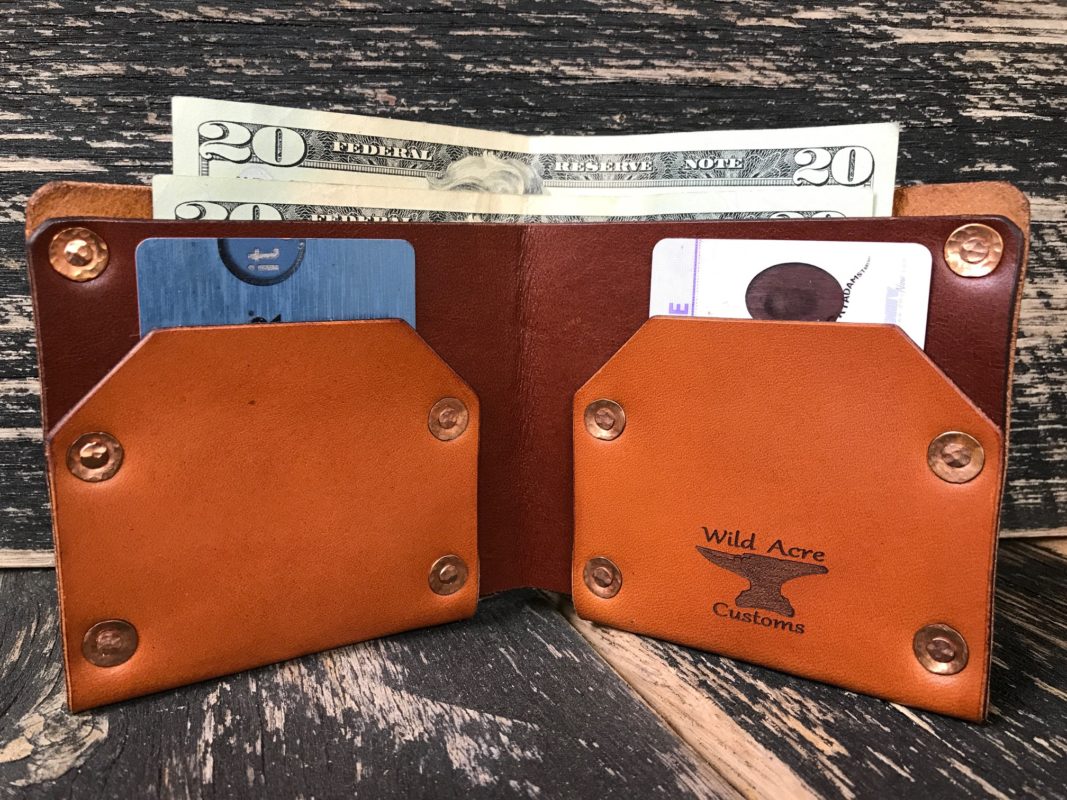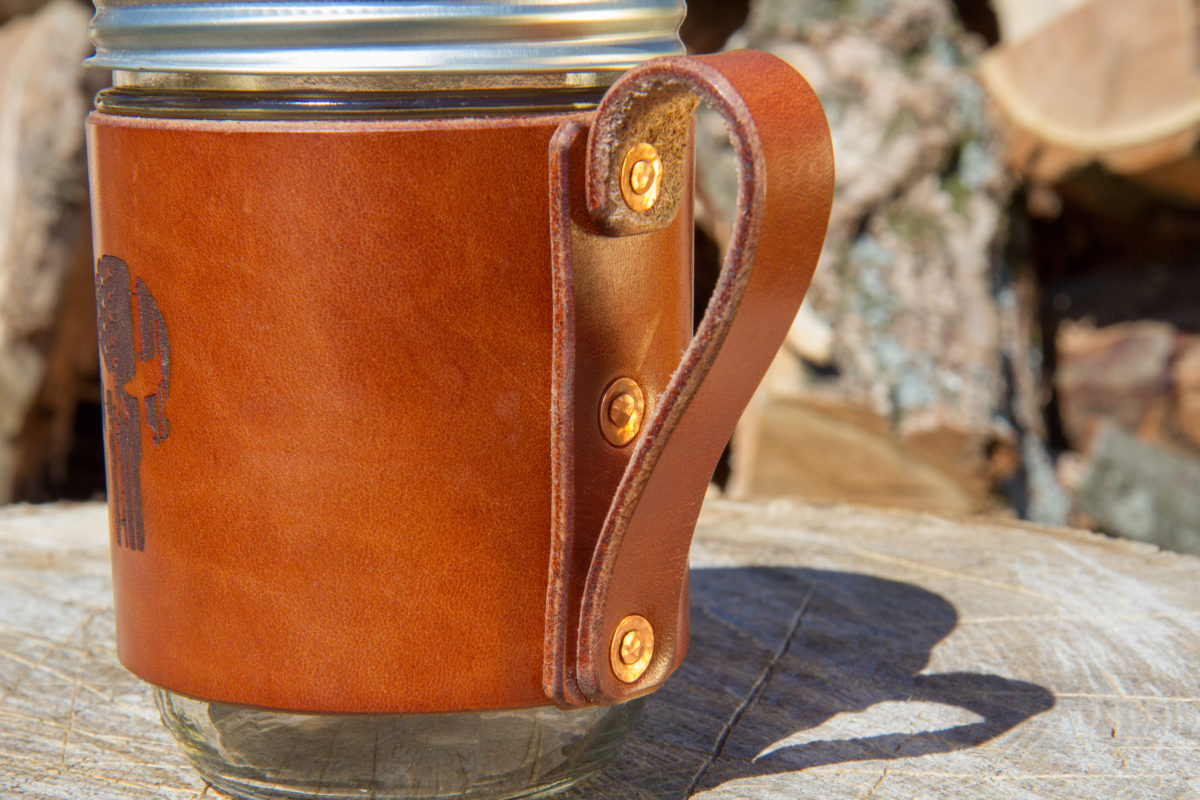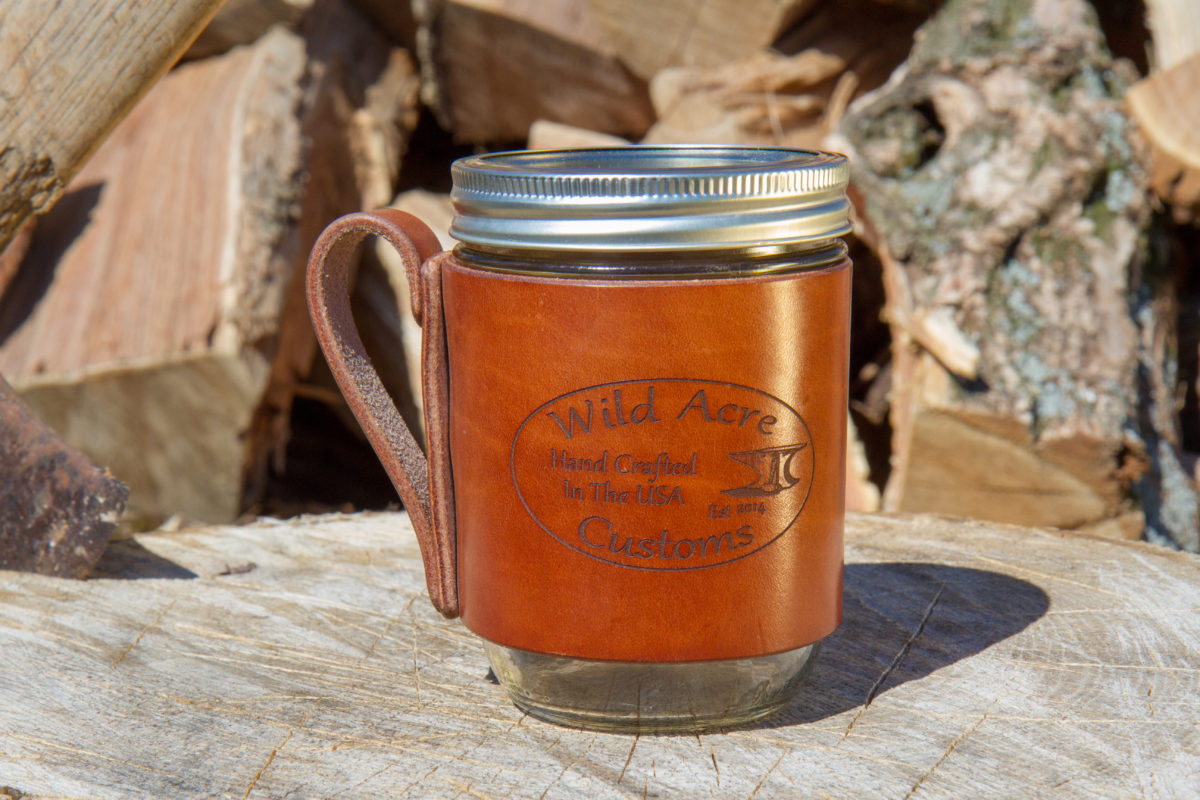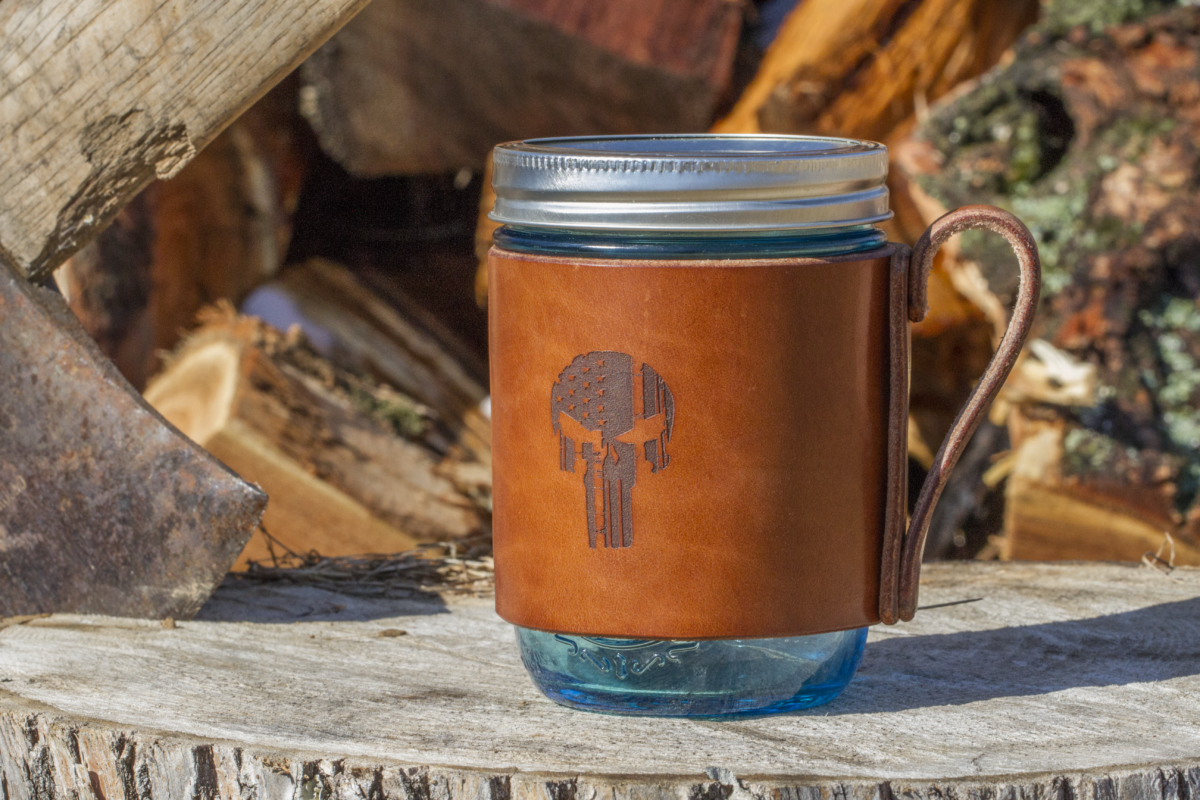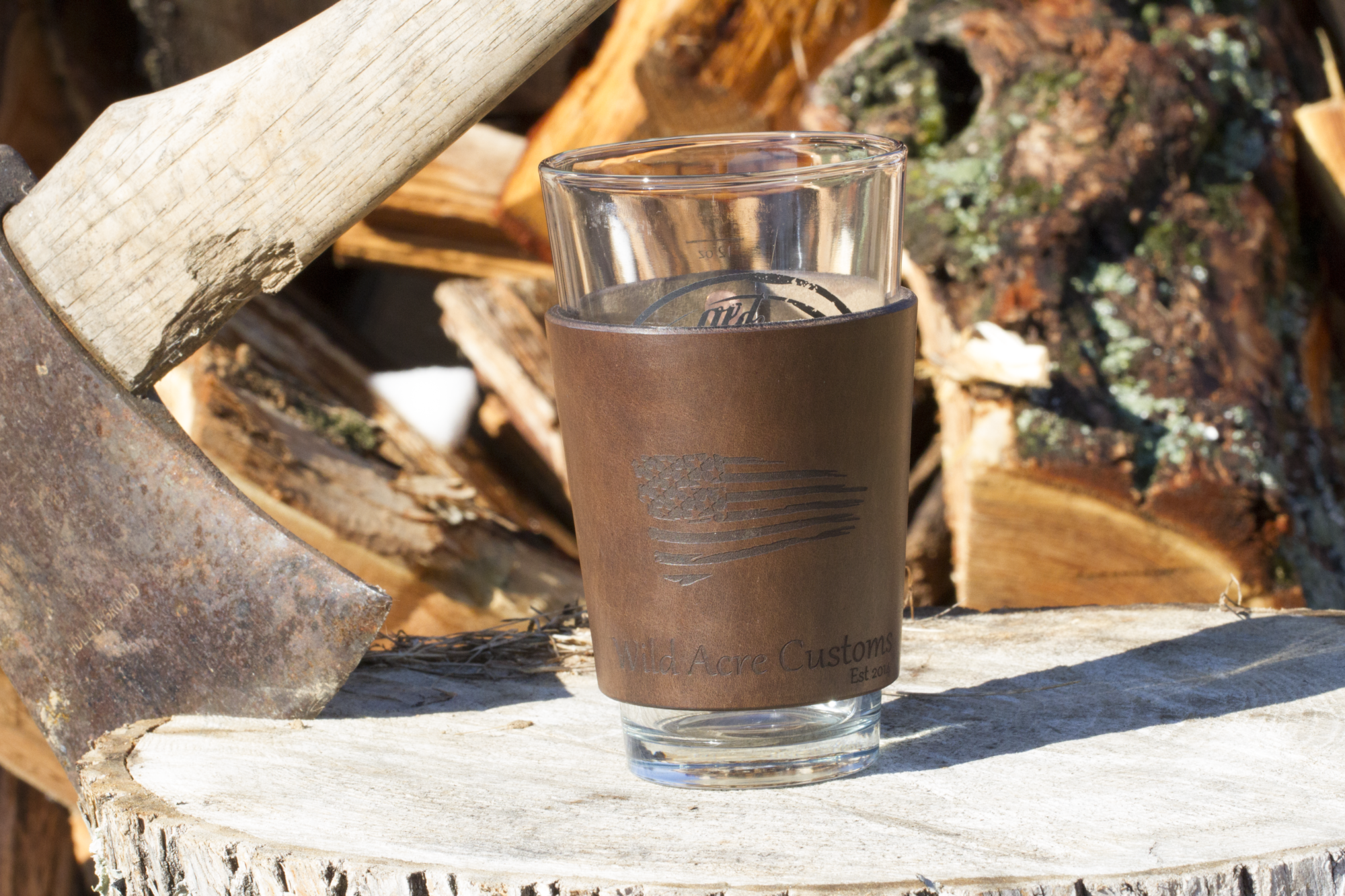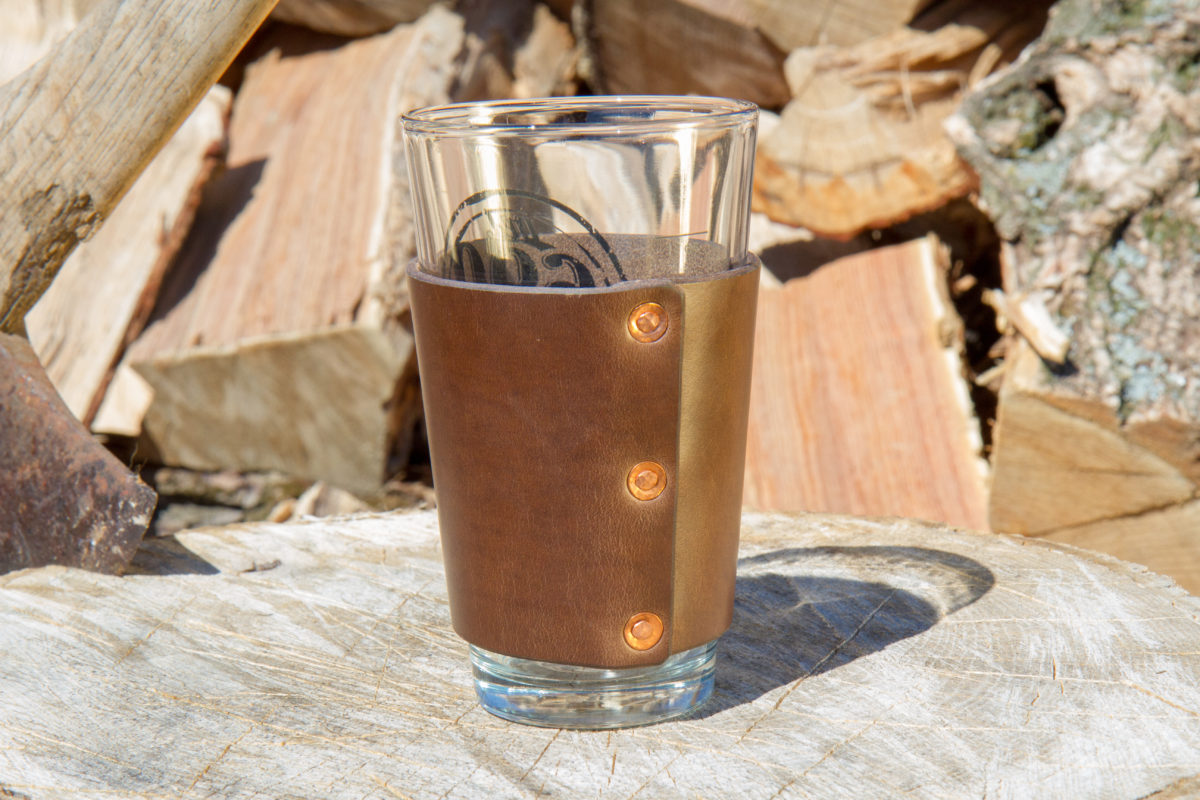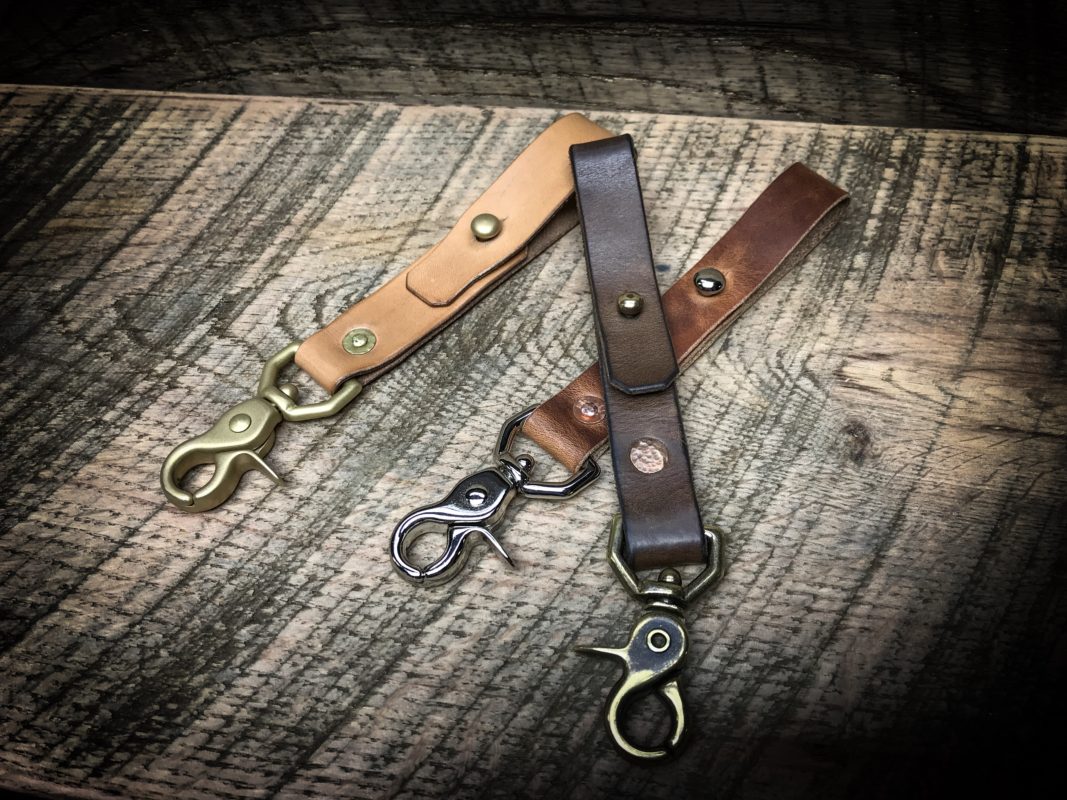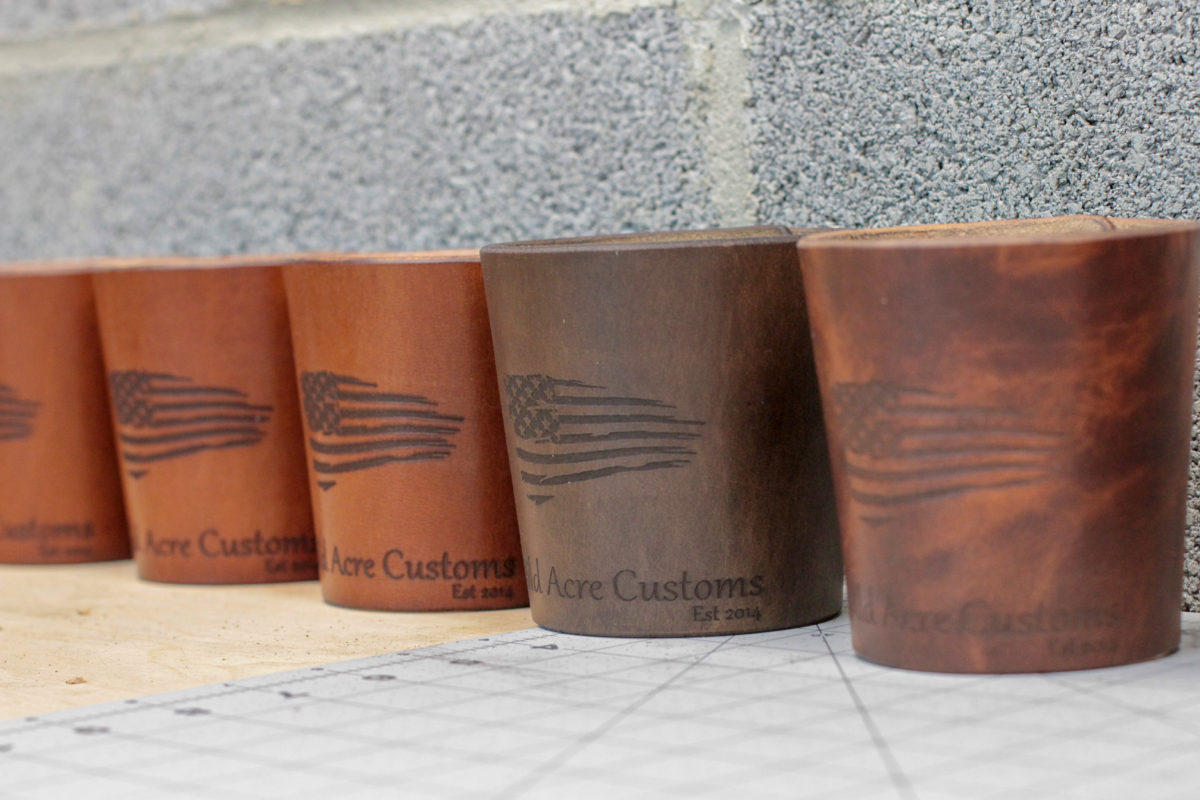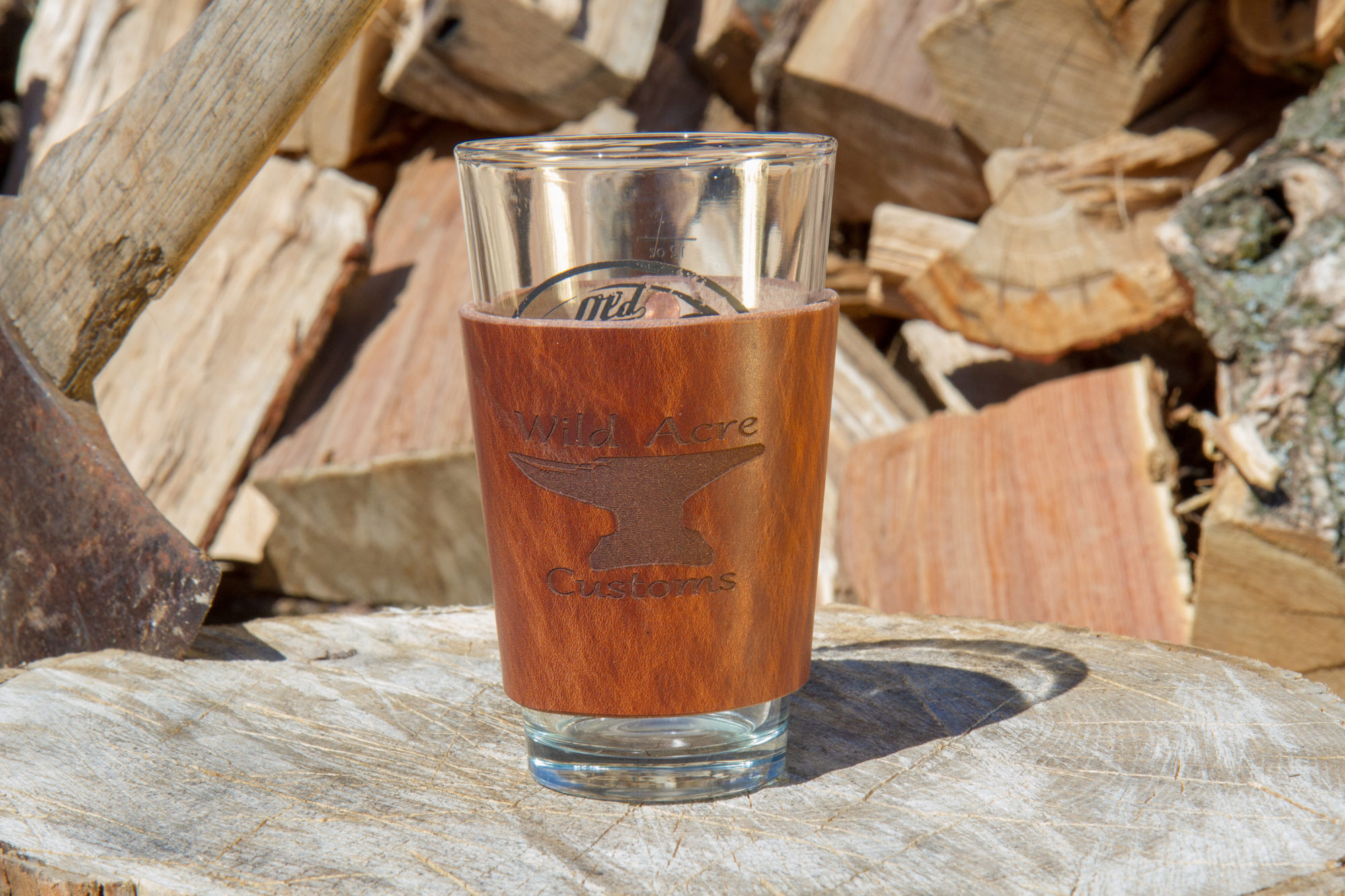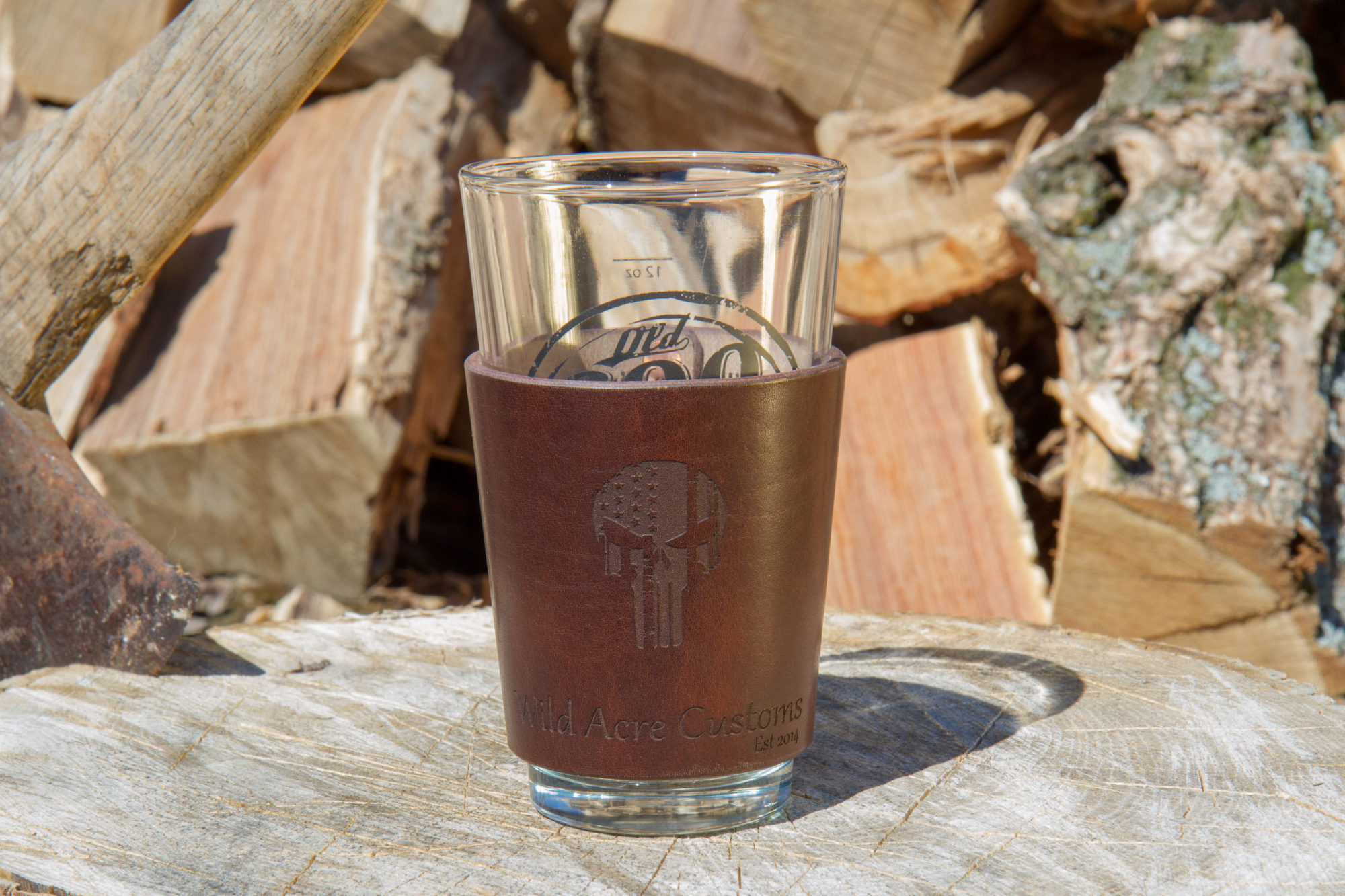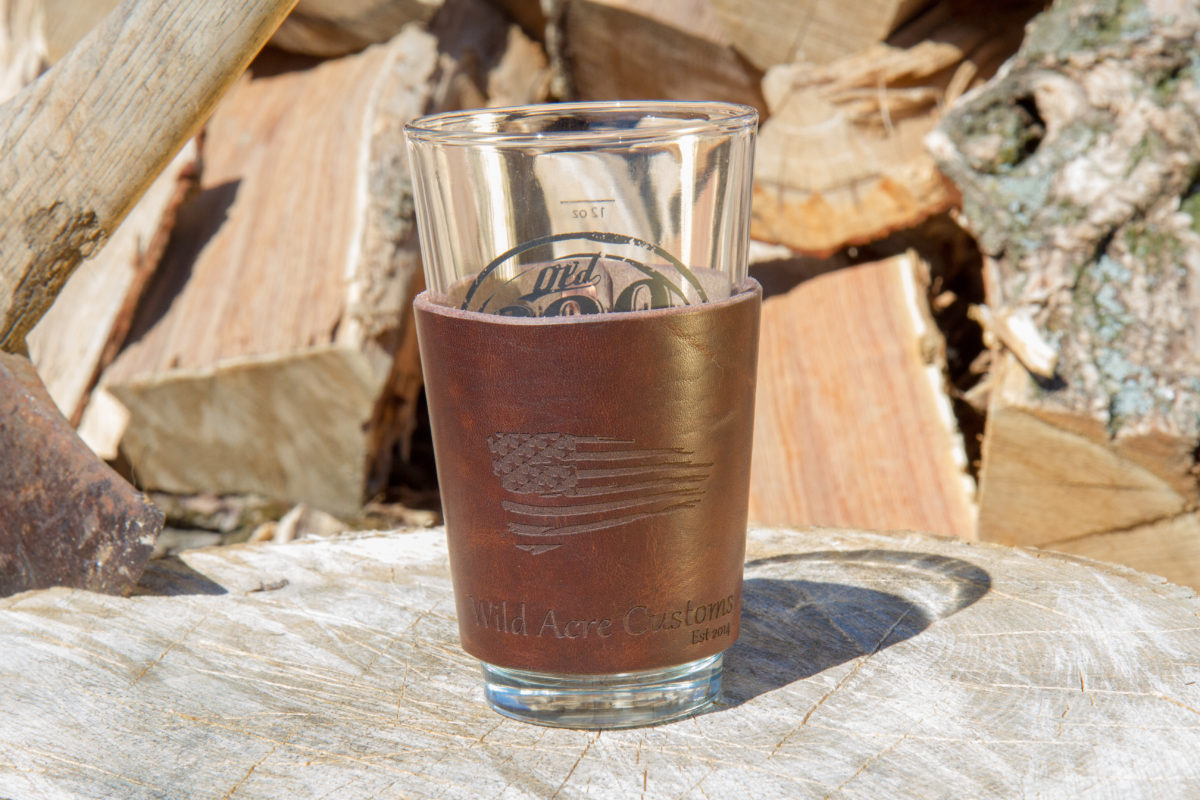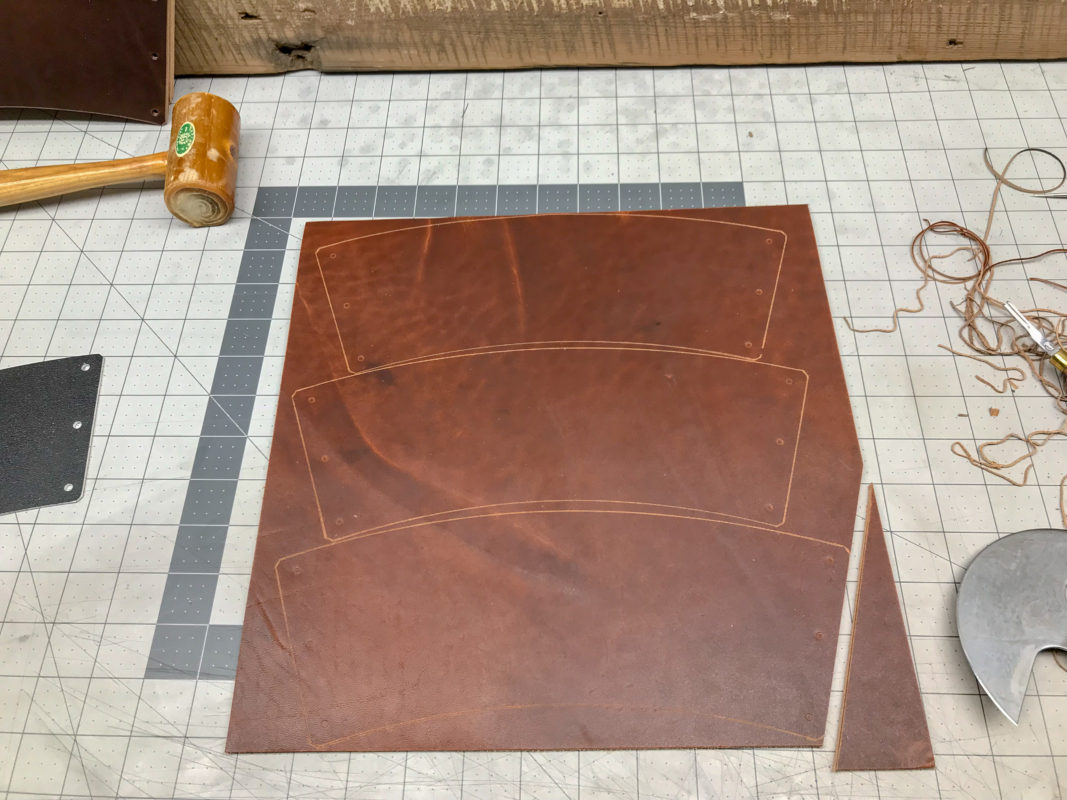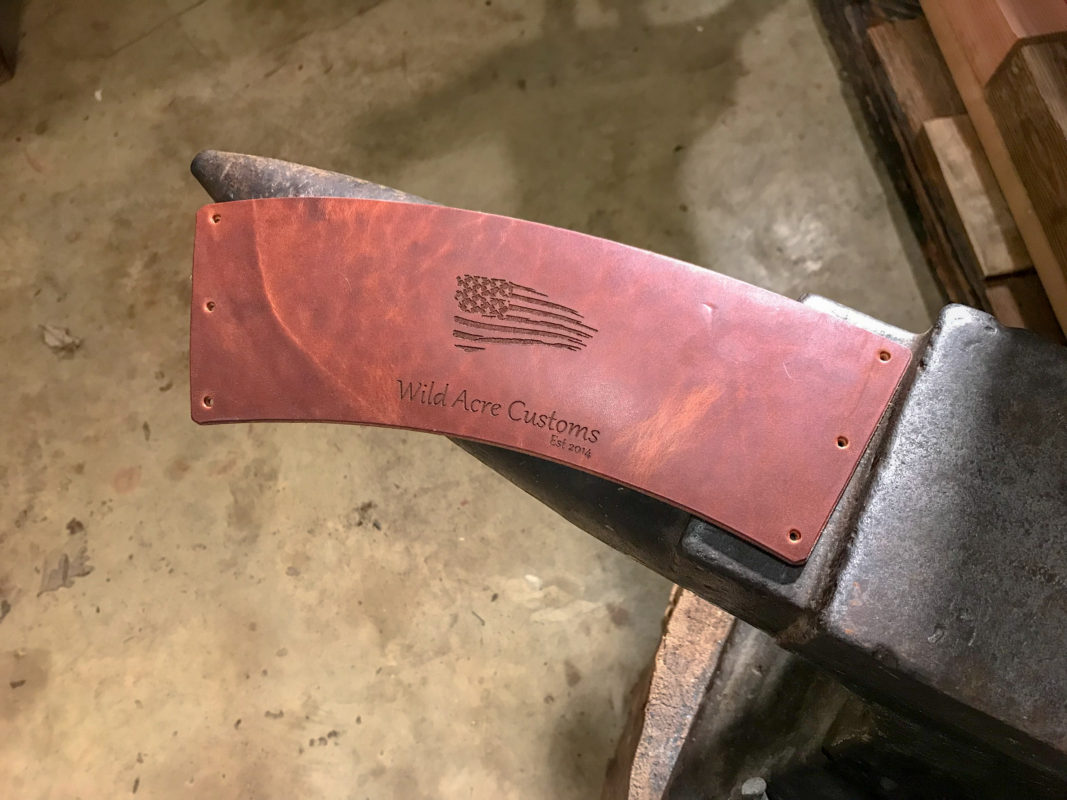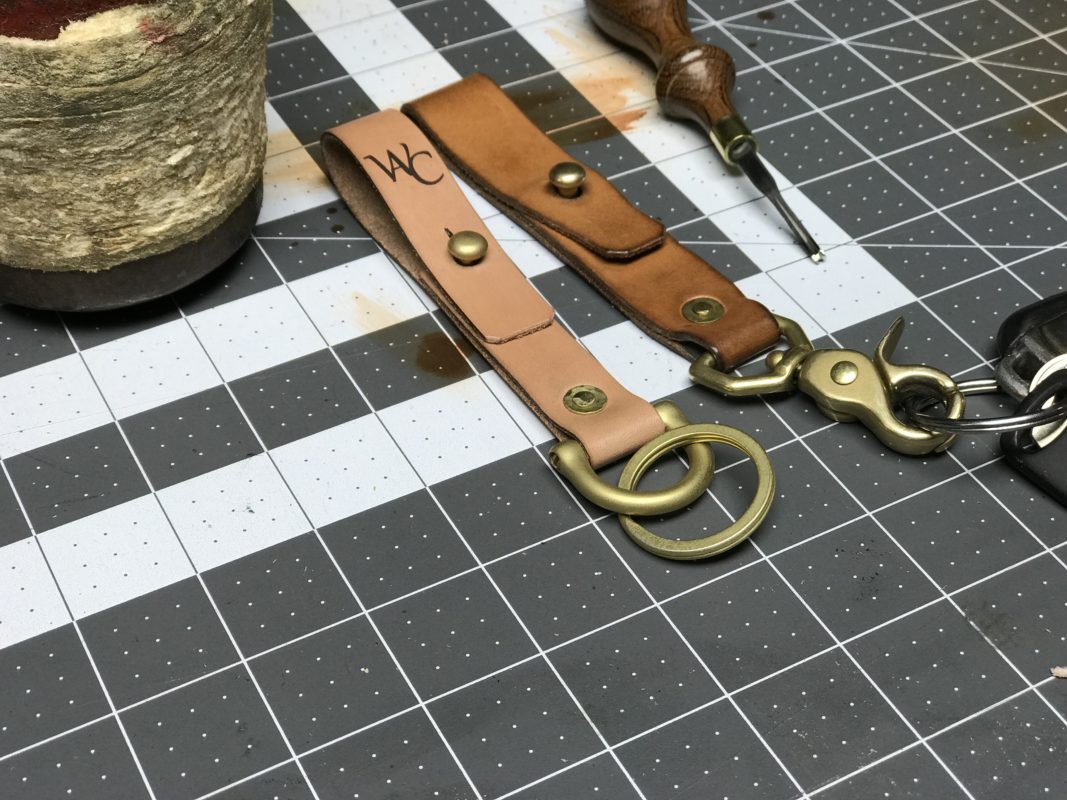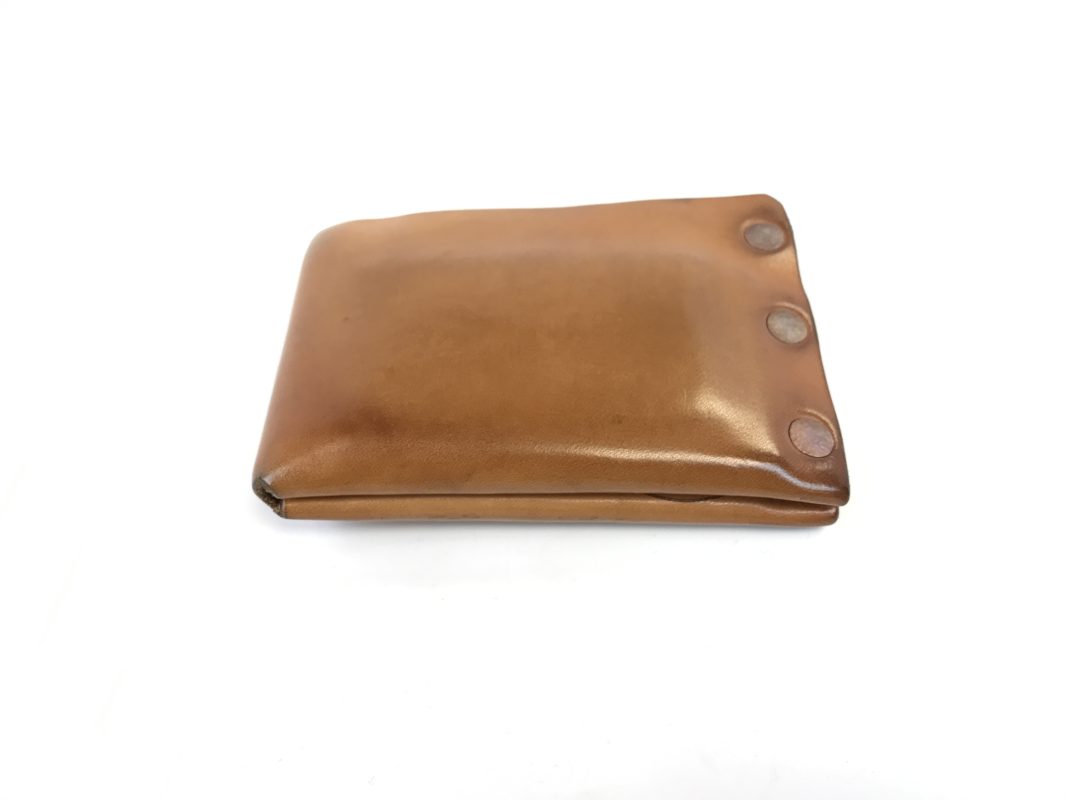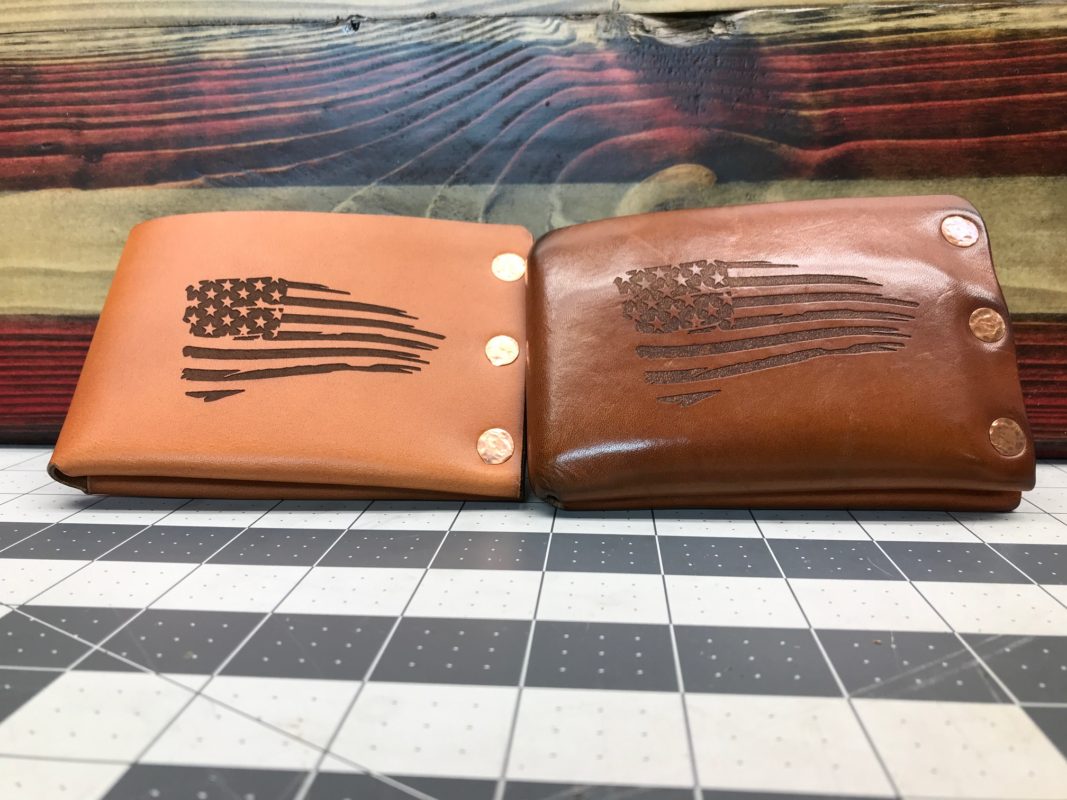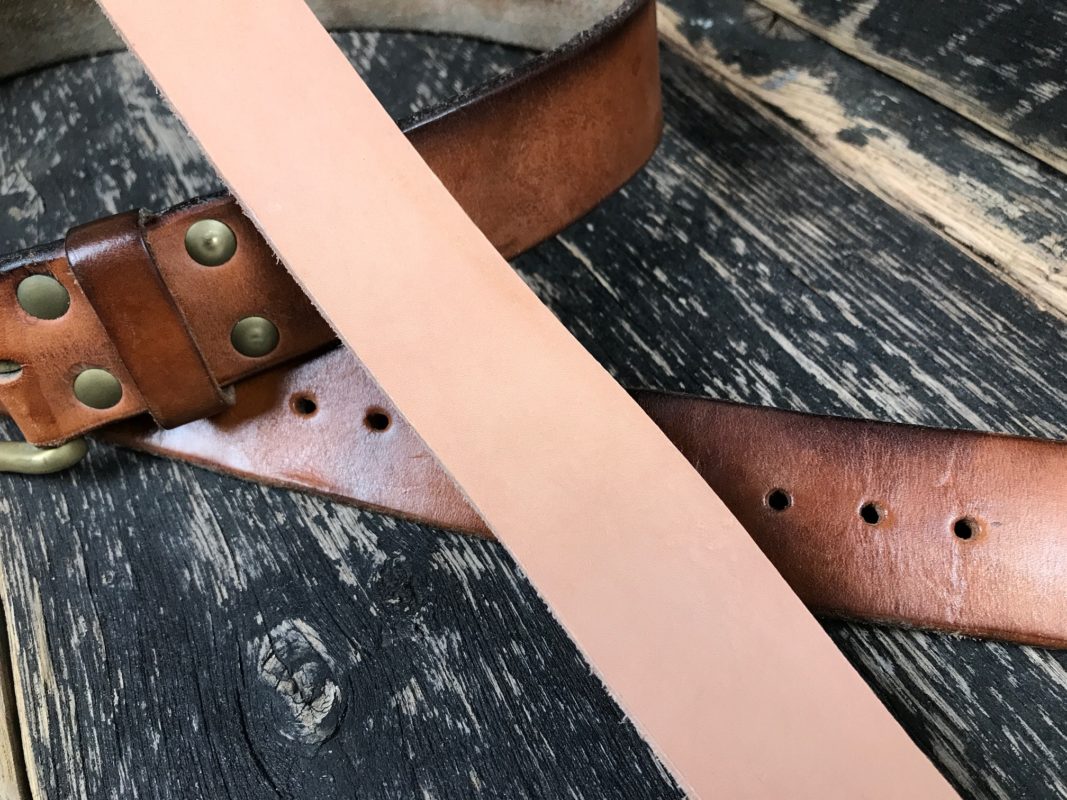Leather
A brief description of the leather used here at Wild Acre Customs, also some leather terminology, and care.
All the leather we use for our goods are from American Tanneries.
Wickett and Craig
Wickett & Craig “English” Bridle Veg Tanned Leather Side
The Tannery: Wickett & Craig of Curwensville, PA, USA (est. 1867)
- English Bridle: The most popular of the Wickett & Craig leathers, English bridle leather is drum dyed in a range of finishes, then hot stuffed with waxes making this leather smooth and flexible with a waxy texture.
- Wickett & Craig “English” Bridle Leather is among the highest end vegetable tanned leathers in the world. Crafted in the USA, Wickett & Craig is known for quality, durability, and rich finishes.
Wickett & Craig “Traditional Harness” Veg Tanned Leather Side
The Tannery: Wickett & Craig of Curwensville, PA, USA (est. 1867)
- Traditional Harness: Quickly becoming one of Wickett’s top leathers, traditional harness is known for its unique blend of waxes, oils and tallows, which are hot stuffed into the leather to bring out the true beauty of the leather and its grain. Utilizing a traditional process known as jack glazing, the oils are brought to the surface which creates a glossy finish that does not hide the leather’s natural grain.
- Wickett & Craig “Traditional Harness” Leather is among the highest end vegetable tanned leathers in the world. Crafted in the USA, Wickett & Craig is known for quality, durability, and rich finishes.
Horween
The Tannery: Horween Leather Company of Chicago, IL, USA (est. 1905)
- Chromexcel: One of, if not the most popular of the Horween leathers, Aniline Chromexcel is hot-stuffed to infuse the leather with oils and greases to make a very comfortable and durable leather. It is then hand stained in a variety of colors. The leather is well known for its natural grain, rich pull-up and a gentle softness.
- What is “pull-up”: When the leather is folded or flexed the greases inside the leather create a tonal effect on the top side of the leather. It can then be buffed out to its near original look. This adds an incredible amount of character to the leather.
- Horween leathers have been hand made since 1905 and still use many of its original tannages and techniques, while innovating with modern applications.
The Tannery: Horween Leather Company of Chicago, IL, USA (est. 1905)
- Dublin: Using the same tanning process of the Essex leathers, Dublin leathers are different in that they are then ‘waxed’ creating a more rustic look with pull-up. Dublin is a veg tanned leather with a rich blend of natural waxes. It retains many of the same characteristics of Essex leather such as being supple, however has darker surface colors that helps bring out the natural grain.
- Dublin is well know for its rugged look, ability to burnish and patina well over time, and a unique pull-up.
What is “pull-up”: When the leather is folded or flexed the greases inside the leather create a tonal effect on the top side of the leather. It can then be buffed out to its near original look. This adds an incredible amount of character to the leather.
Hermann Oak
The Tannery: Hermann Oak Leather of St.Louis, Missouri, USA (est. 1881)
Hermann Oak® Leather Co. was started by Lewis Charles Hermann in St. Louis, Missouri in 1881 to serve the local harness trade and to supply wagon loads of settlers on their way West.. Three more generations of Hermanns have followed in Lewis’s footsteps to bring the finest quality vegetable leathers to market. The tanning process has not changed much through the years. They still use the finest natural tree bark in their tanning liquors for richness and texture. And, each side is soaked in ground-vats and hand-worked for smooth, consistent and firm results.
Since 1881 the Hermann Oak Leather company has earned the reputation of being the premier leather manufacturer in the United States. Their specialty is vegetable tanning, a type of tanning used to make leather for many uses, including saddle making. Hermann Oak Leather can be found in certain saddles made by such prestigious saddle makers.
Fun Things To Know
There are a wide variety of tanning methods to convert animal hide into leather. Two commonly used methods of tanning, vegetable tanning and chrome tanning, are compared below.
Vegetable Tanning
Vegetable tanning is a process that uses “tannin” to change hide into leather. Tannin is derived from natural products found in plants. Vegetable tanning produces a leather that is:
- Firm
- Strong when thick
- Well suited to carving or molding
- Non-irritating to skin
- Non-corrosive to metal
Vegetable tanned leather is one of the more expensive leathers and is frequently found in products such as saddles, shoe soles, and gun leather.
Chrome Tanning
Chrome tanning is a method of tanning that uses chromium sulfate and other compounds to tan the leather. Chrome tanning produces a leather that is:
- Soft and pliable
- Strong when thin
Chrome tanned leather is often less expensive than vegetable tanned leather because the tanning process is considerably shorter. Chrome tanned leather is frequently used in items such as clothes, upholstery, gloves, and chaps.
Natural Vegetable tanned leather will patina with use and take on a beautiful honey brown color, this happens from the transfer of oils from your skin as you handle and use your leather product, and if you wear denim jeans often the leather will take on a blue tone also.
Take a look at the pictures below to see the honey brown patina your leather product will achieve with use. The light color is the way you will receive the product, and the honey brown color is what it will become. Enjoy!
Leather Patina
Leather patina happens with aging and the handling of the leather, as you handle the leather in your day to day activity, you are transferring oils from your hands to the leather. In the pictures below you can see different leather types (Natural Veg-tanned and English Bridle) that has taken on a beautiful patina.
The wallet is English Bridle ‘Tan’
The belt and key fob are Natural Veg-tanned


